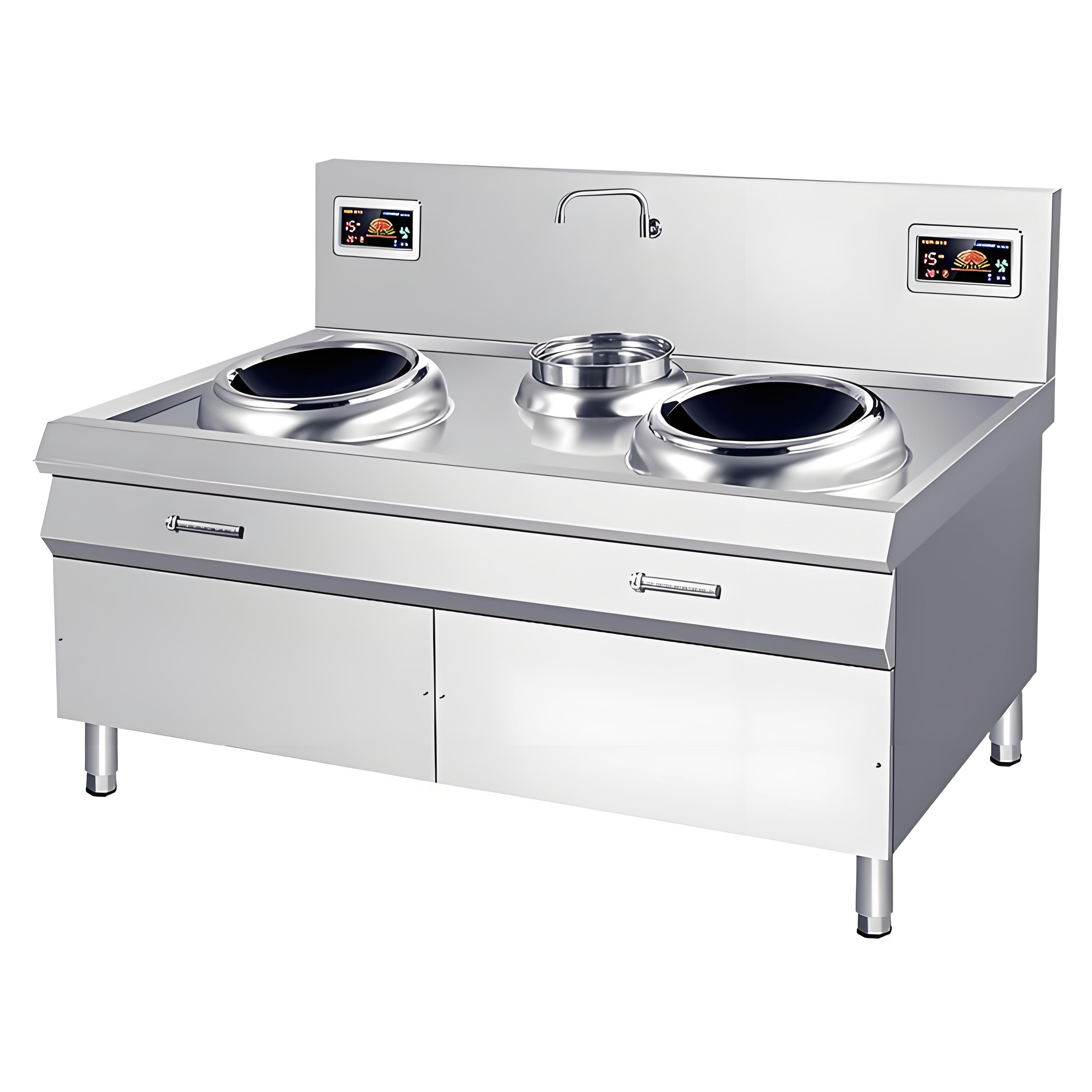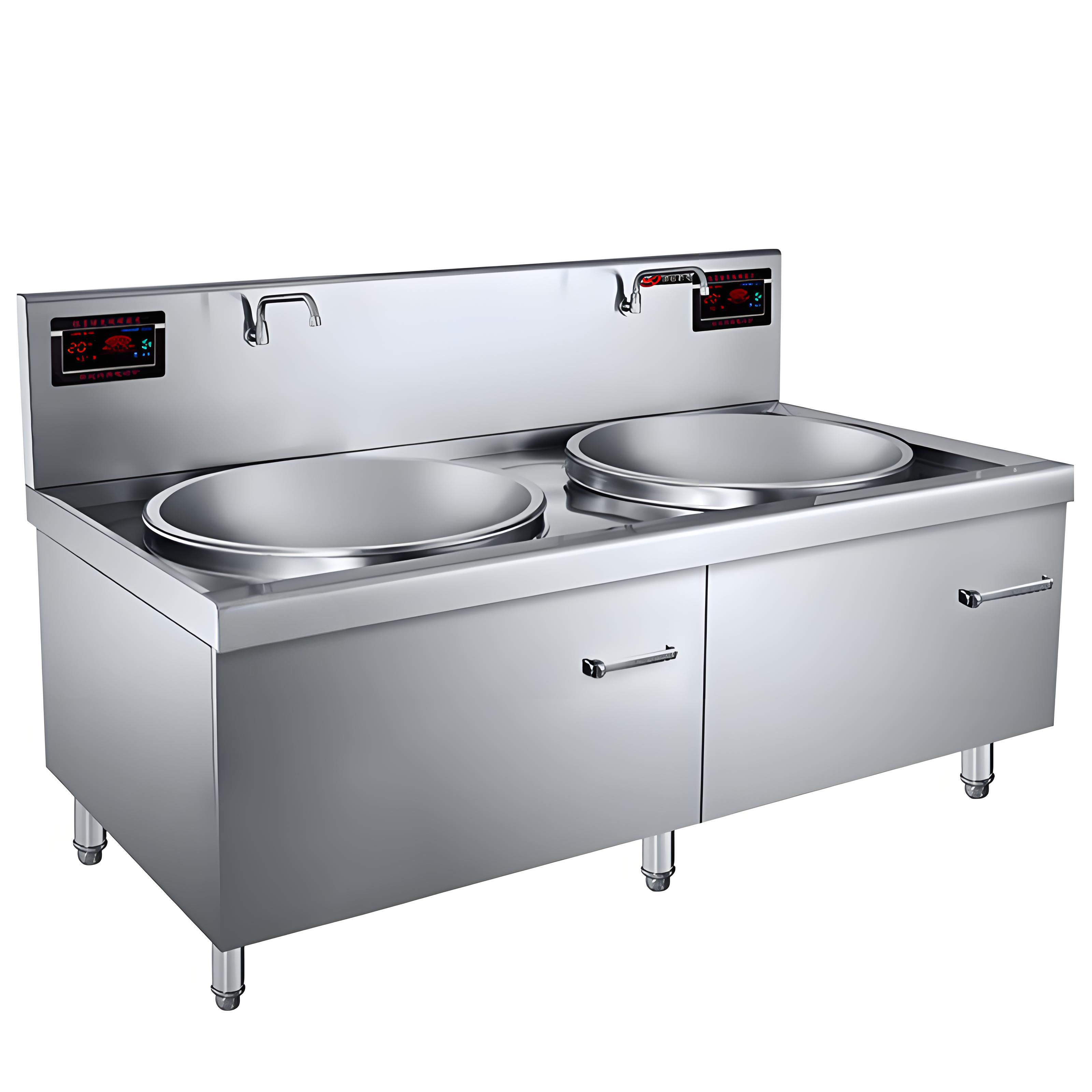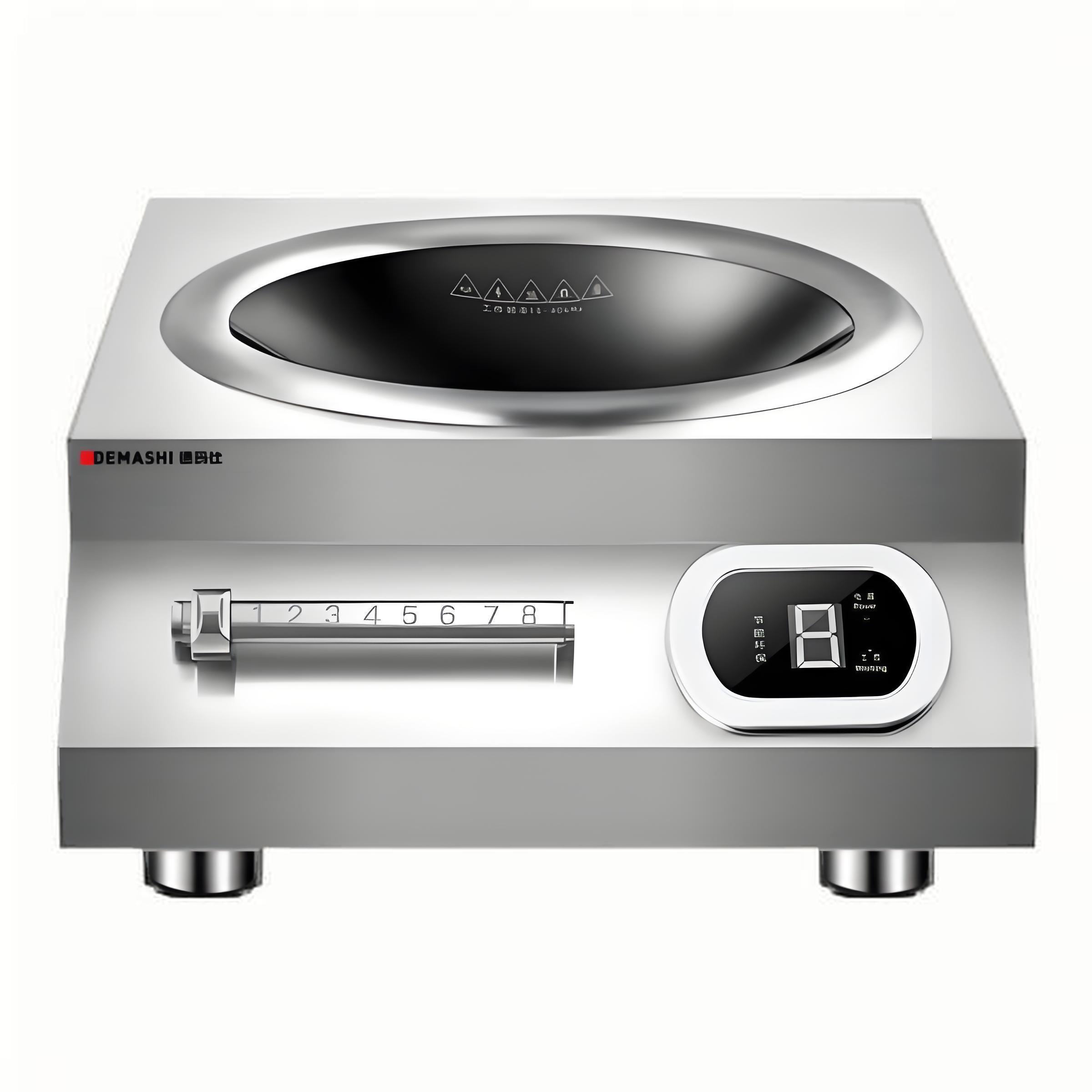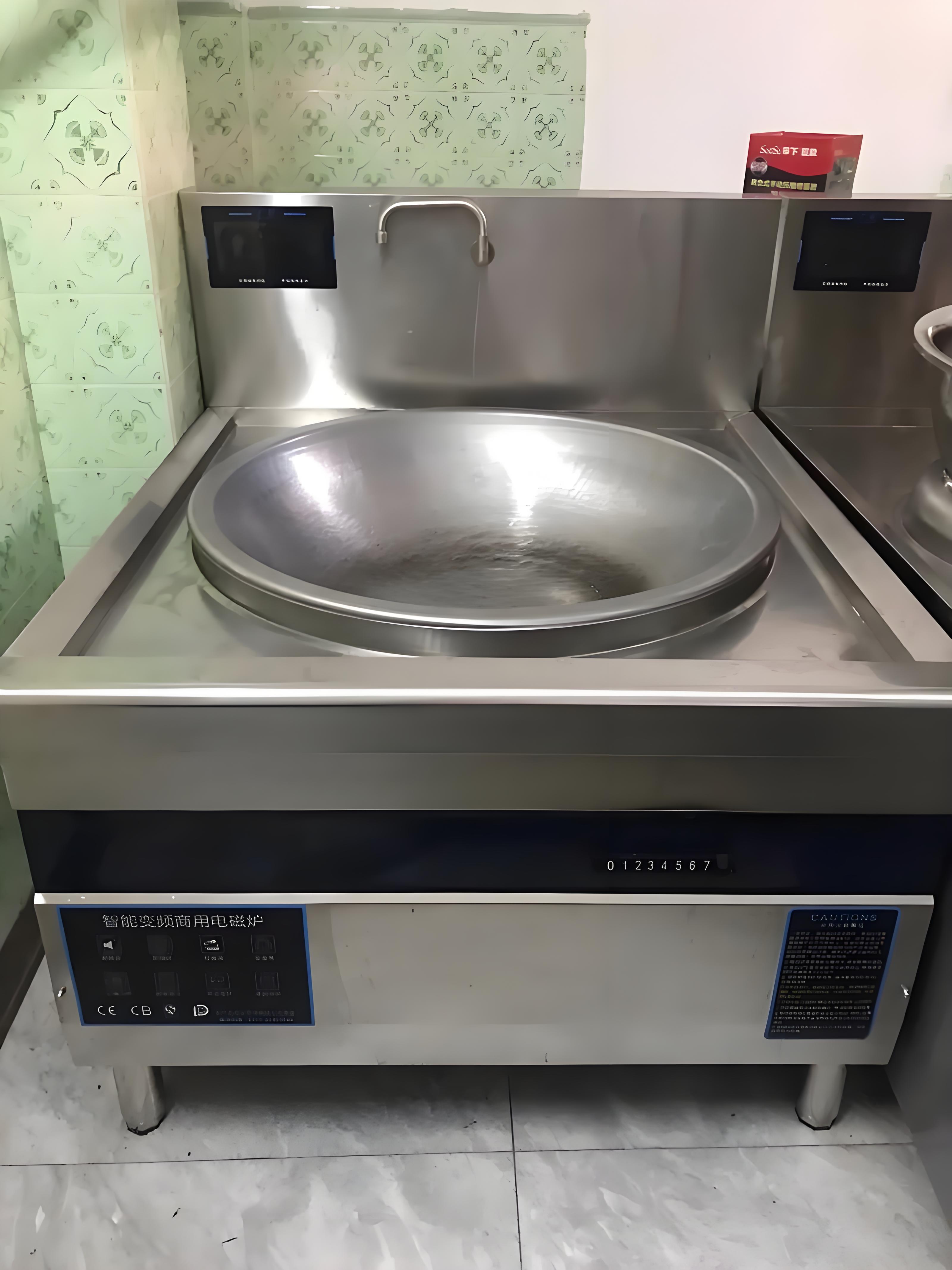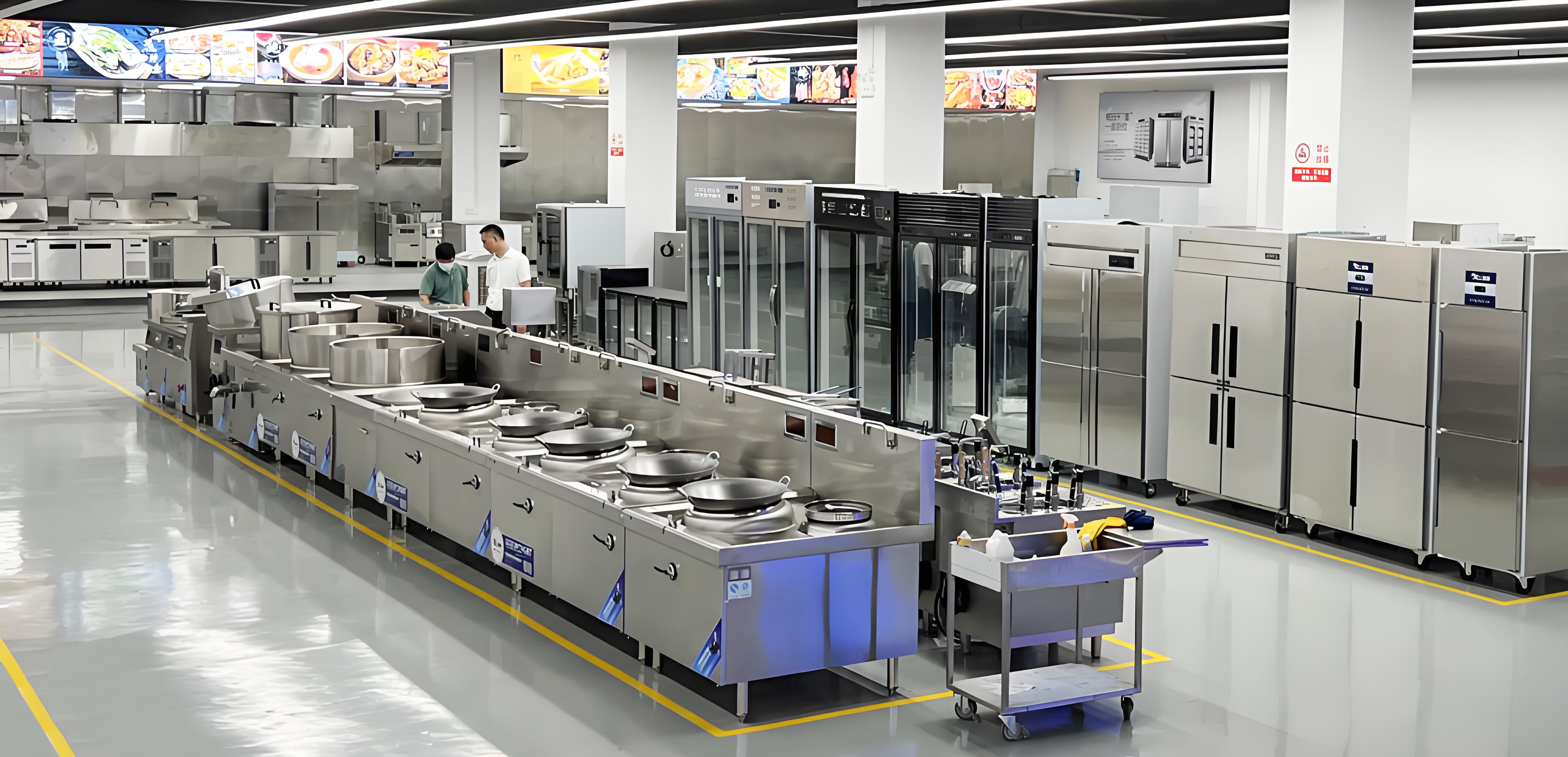Having worked as a consultant for commercial kitchens for over a decade, I’ve troubleshooted my fair share of equipment failures, from high-end ovens to heavy-duty mixers. One issue that frequently comes up, especially in busy hotel or restaurant kitchens, is a commercial induction cooker that won’t turn on. This can be a real headache, halting operations and stressing out staff during peak hours. Based on my experience helping chefs and managers get their kitchens back on track, I’ll walk you through the common reasons an induction cooker might fail to start and provide step-by-step solutions to get it running again. Whether you’re a kitchen manager or a technician, my goal is to help you diagnose and fix the issue efficiently, with practical tips and real-world insights.

Why Won’t Your Commercial Induction Cooker Turn On?
A commercial induction cooker is a workhorse in professional kitchens, valued for its energy efficiency, precision, and speed. But when it refuses to power on, it can disrupt everything from prep to service. The reasons range from simple user errors to complex electrical issues. Over the years, I’ve seen everything from unplugged cords to faulty control boards cause this problem. Below, I’ll break down the most common causes and offer actionable solutions, drawing from my hands-on experience in commercial kitchen troubleshooting.
Common Causes and Solutions
Here’s a detailed guide to diagnosing and fixing a commercial induction cooker that won’t turn on, organized by the most likely culprits.
1. Power Supply Issues
The first thing I check when an induction cooker won’t start is the power supply. Commercial kitchens often have complex electrical setups, and issues here are more common than you’d think.
Check the Plug and Outlet: Ensure the cooker is properly plugged in. I’ve been called to kitchens where a loose plug was the culprit—easy fix, but easy to overlook. Also, verify the outlet is functional by plugging in another device.
Inspect the Circuit Breaker: Commercial induction cookers require high voltage (typically 208-240V), and a tripped breaker can cut power. Check your kitchen’s electrical panel and reset any tripped breakers.
Verify Voltage and Amperage: Ensure the outlet matches the cooker’s requirements (e.g., single-phase or three-phase power). I once troubleshooted a high-end restaurant’s induction unit that wouldn’t start because it was plugged into a mismatched outlet.
Solution: Plug the unit into a compatible, functional outlet. If the breaker keeps tripping, consult an electrician to check for overloads or faulty wiring (cost: $100-$500 for professional service).
My Take: Always start with the power supply—it’s the most common issue and often the easiest to fix.
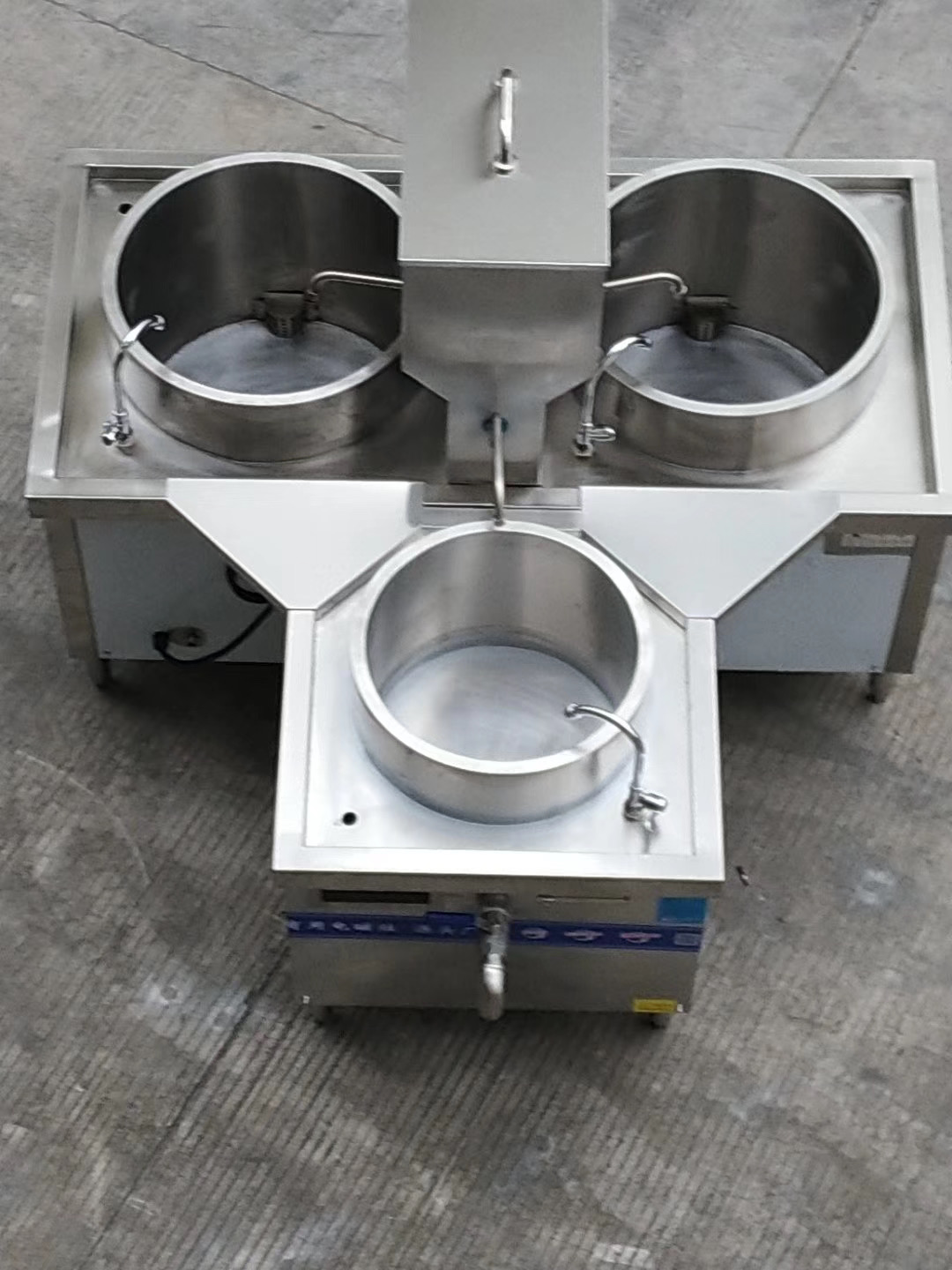
2. Faulty Power Cord or Connection
The power cord or its connection to the cooker can wear out, especially in high-use environments where cords get tugged or bent.
Inspect the Cord: Look for frayed wires, burn marks, or loose connections at the plug or cooker’s terminal block. I’ve seen cords damaged from being pinched under heavy equipment.
Test Continuity: If you have a multimeter, test the cord for continuity to ensure it’s conducting electricity properly.
Solution: Replace a damaged cord with a manufacturer-approved one (cost: $20-$100). Avoid using extension cords, as they can’t handle the high amperage of commercial units.
My Take: A damaged cord is a safety hazard and a common failure point in busy kitchens. Regular inspections can prevent this issue.
3. Control Panel or Button Malfunction
Modern induction cookers rely on electronic control panels, which can fail due to wear, spills, or power surges.
Check for Error Codes: Many units display error codes when powered on but malfunctioning. Refer to the user manual for codes like “E0” or “F1,” which often indicate control issues.
Test Buttons or Touch Controls: Press each button or touch area to ensure responsiveness. I’ve seen panels become unresponsive due to grease buildup or water damage.
Solution: Clean the control panel with a dry cloth or mild cleaner (avoid soaking it). If it’s still unresponsive, the control board may need replacement (cost: $200-$800, depending on the model).
My Take: Control panel issues are tricky but common in high-humidity kitchens. Always keep the panel clean and dry to avoid problems.
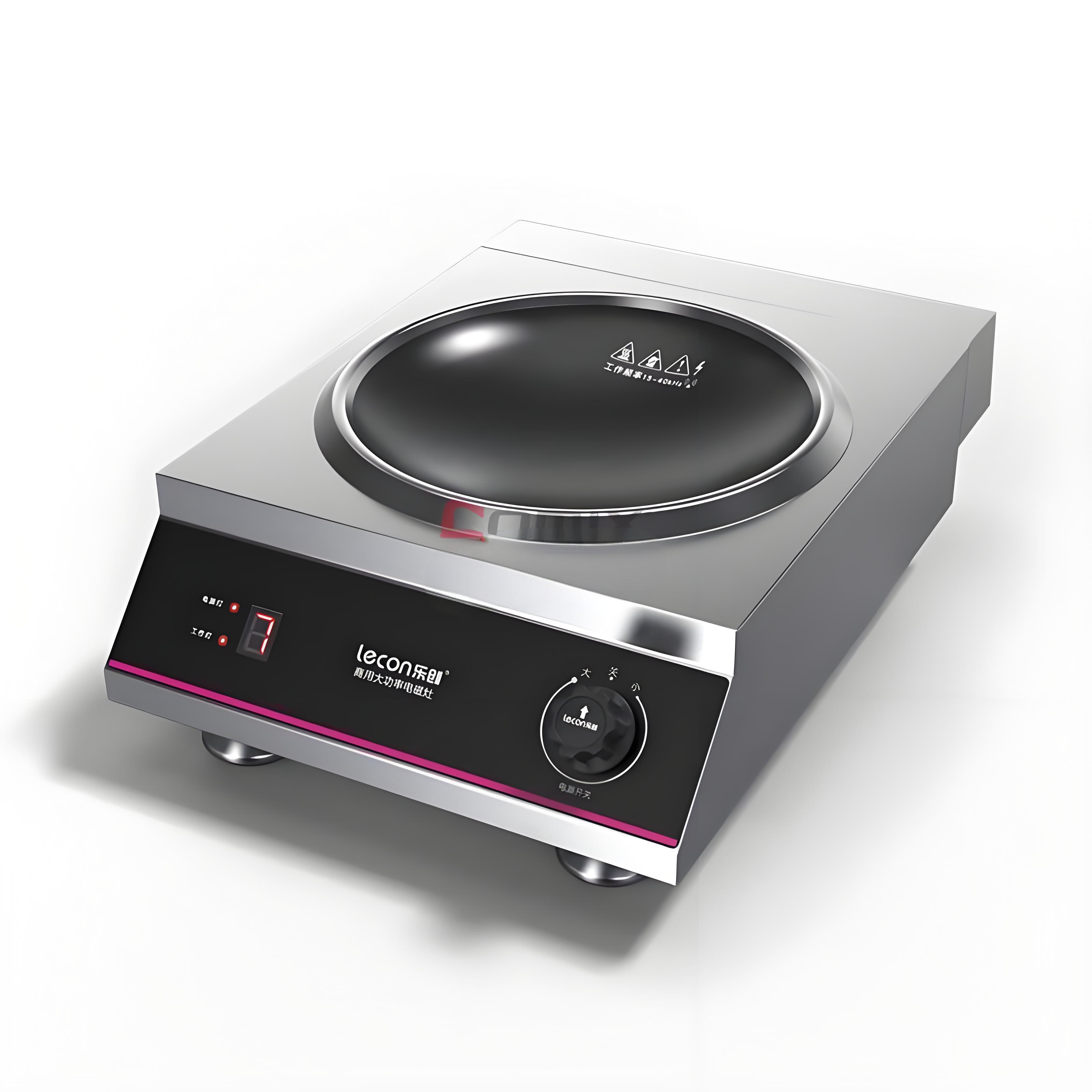
4. Overheating or Safety Lockout
Commercial induction cookers have safety mechanisms that shut down the unit if it overheats or detects an issue, preventing it from turning on.
Check Ventilation: Ensure the cooker’s vents aren’t blocked by pots, pans, or debris. I once fixed a unit that wouldn’t start because it was pushed against a wall, blocking airflow.
Cool Down Period: If the unit was recently used heavily, it may have entered a safety lockout. Let it cool for 30-60 minutes and try again.
Solution: Clear vents and ensure proper airflow. If the issue persists, the internal thermostat or cooling fan may be faulty, requiring professional repair (cost: $150-$400).
My Take: Overheating is a frequent issue in busy kitchens. Regular cleaning and proper placement can prevent lockouts.
5. Internal Component Failure
If the above checks don’t resolve the issue, the problem may lie with internal components like the power board, inverter, or induction coil.
Power Board Issues: The power board regulates electricity to the unit. A blown fuse or damaged board can prevent startup.
Inverter or Coil Failure: The inverter converts power for the induction process, and the coil generates the magnetic field. Both can fail due to surges or wear. I’ve seen this in older units used non-stop in banquet halls.
Solution: These repairs require a technician, as they involve complex diagnostics and replacement parts (cost: $300-$1,200, depending on the part and labor). Contact the manufacturer or a certified repair service.
My Take: Internal failures are rare but costly. Regular maintenance can extend component life, but older units may need professional attention.
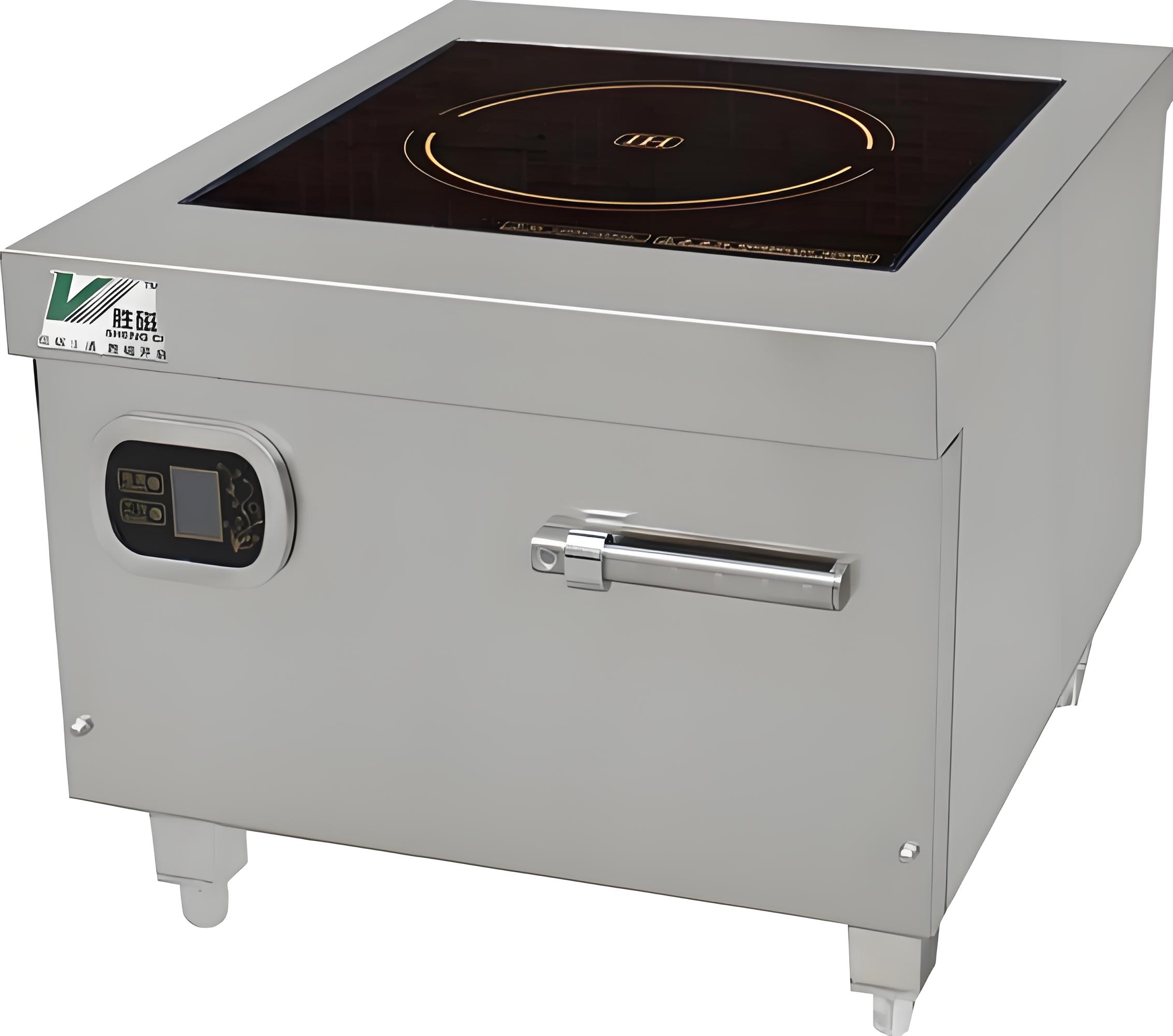
6. User Error or Settings
Sometimes, the issue is as simple as a misconfigured setting or operator error, especially with new staff.
Check the Power Switch: Ensure the main power switch (if present) is on. Some units have a separate switch on the back or side.
Verify Cookware: Induction cookers require ferromagnetic cookware (e.g., cast iron or stainless steel). Non-compatible pans can prevent the unit from starting. I’ve seen chefs try to use aluminum pans, which don’t work.
Solution: Double-check settings and use compatible cookware. Train staff on proper use to avoid recurring issues.
My Take: User errors are common in high-turnover kitchens. A quick training session can save hours of downtime.
Troubleshooting Checklist
To streamline your diagnosis, here’s a table summarizing the steps to take when your commercial induction cooker won’t turn on:
| Issue | Symptoms | Solution | Estimated Cost |
|---|---|---|---|
| Power Supply | No lights, no response | Check plug, outlet, breaker | $0-$500 (electrician) |
| Power Cord | No power, visible damage | Inspect/replace cord | $20-$100 |
| Control Panel | Unresponsive buttons, error codes | Clean panel, replace board | $0-$800 |
| Overheating | Unit shuts off, won’t restart | Clear vents, allow cooldown | $0-$400 |
| Internal Components | No power despite checks | Call technician for repair | $300-$1,200 |
| User Error | No response, wrong cookware | Check settings, use correct pans | $0 |
My Experience: Real-World Troubleshooting
A couple of years ago, I was called to a bustling hotel kitchen where their Vollrath induction cooker wouldn’t turn on during a busy dinner service. The staff was panicking, and the manager thought the unit was dead. I started with the basics: the plug was secure, but the breaker had tripped due to an overloaded circuit. Resetting it solved the issue in minutes, and we rearranged the kitchen’s power setup to prevent future trips. In another case, a restaurant’s Electrolux unit displayed an “E1” error code. After cleaning the grease-covered control panel and resetting the unit, it powered up fine, saving a costly repair. These experiences taught me to start simple and escalate to complex fixes only when necessary.
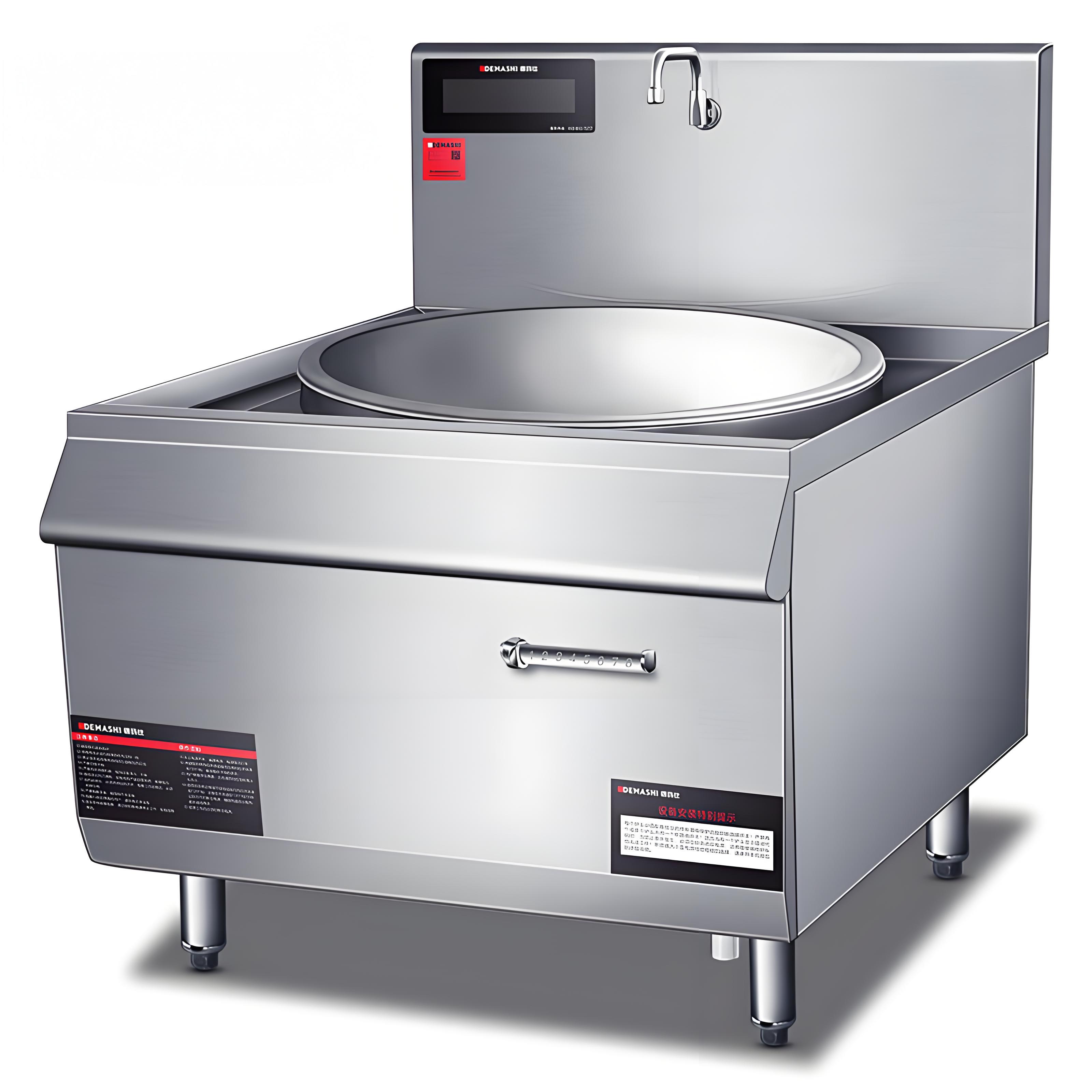
Preventive Maintenance Tips
To avoid future power failures and extend your induction cooker’s lifespan, follow these tips from my years of working with commercial kitchens:
Regular Cleaning: Wipe down the surface and control panel daily with a damp cloth and mild detergent. Avoid water pooling near electronics.
Check Ventilation: Ensure vents are clear of obstructions and clean fans monthly to prevent overheating.
Inspect Cords: Check power cords quarterly for wear or damage, especially in high-traffic areas.
Schedule Maintenance: Have a technician inspect the unit annually to catch issues like worn components or loose connections (cost: $100-$300).
Train Staff: Educate kitchen staff on proper use, including compatible cookware and avoiding power surges by not overloading circuits.
When to Call a Professional
If you’ve tried the above steps and the cooker still won’t turn on, it’s time to call a certified technician. Here’s when to seek help:
Persistent Error Codes: If the unit displays codes that don’t resolve after resetting or cleaning.
Electrical Issues: If breakers keep tripping or you suspect faulty wiring.
Internal Failures: If you hear unusual noises (e.g., buzzing) or smell burning, indicating component issues.
Contact the manufacturer’s service line or a local appliance repair service specializing in commercial equipment. Expect costs of $100-$200/hour for labor, plus parts.
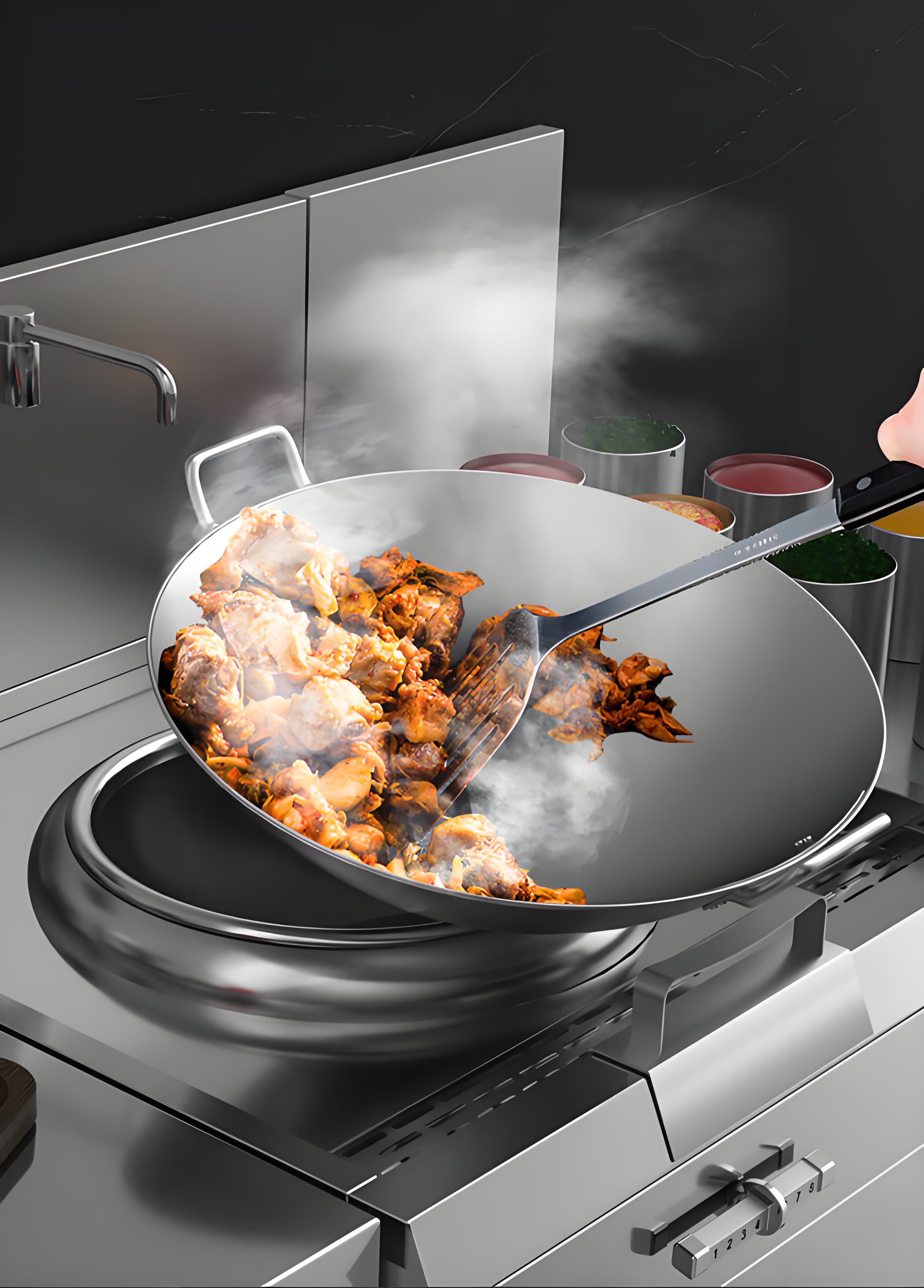
A Personal Story: Saving a Kitchen in Crisis
Last year, I got an urgent call from a restaurant client whose InductoTherm double-burner unit failed right before a wedding reception. The kitchen was in chaos, with no backup burners. I arrived and checked the power supply—everything seemed fine. The control panel was unresponsive, but I noticed grease buildup around the touch controls. After carefully cleaning it with a dry cloth and resetting the unit, it powered on, saving the day. The chef later told me that one simple fix avoided canceling the event. This experience reinforced the importance of systematic troubleshooting and regular maintenance to prevent emergencies.
Conclusion: Getting Your Induction Cooker Back Online
A commercial induction cooker that won’t turn on can feel like a disaster, but most issues are fixable with the right approach. Start with simple checks like the power supply, cord, and control panel, then move to more complex issues like overheating or internal failures. By following the steps I’ve outlined, you can often resolve the problem yourself or know when to call a professional. Regular maintenance and staff training can prevent future issues, keeping your kitchen running smoothly. If you’re still stuck or have specific details about your cooker’s issue, drop a comment, and I’ll help you troubleshoot further!
Related Q&A
Q1: Can I use a home induction cooker in a commercial kitchen?
A: Not recommended. Commercial induction cookers are built for high-volume use and meet stricter safety codes. Home units may overheat or fail under constant use.
Q2: How do I know if my cooker’s issue is covered by warranty?
A: Check the manufacturer’s warranty (typically 1-3 years). Issues like control board failures or inverter problems are often covered, but user damage (e.g., liquid spills) may not be. Contact the supplier with your model and serial number.
Q3: How long should a commercial induction cooker last?
A: With proper maintenance, 5-10 years. Brands like Vulcan or Electrolux often last longer with regular servicing.
Q4: Can power surges damage my induction cooker?
A: Yes, surges can fry the control board or inverter. Use a surge protector or ensure your kitchen’s electrical system is stable to prevent damage.
